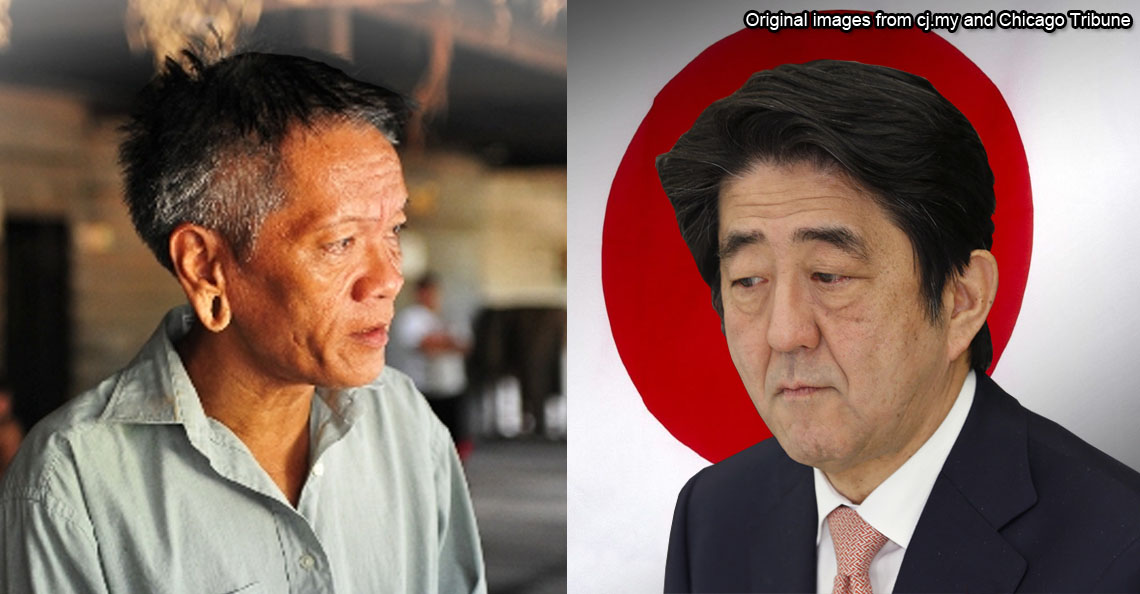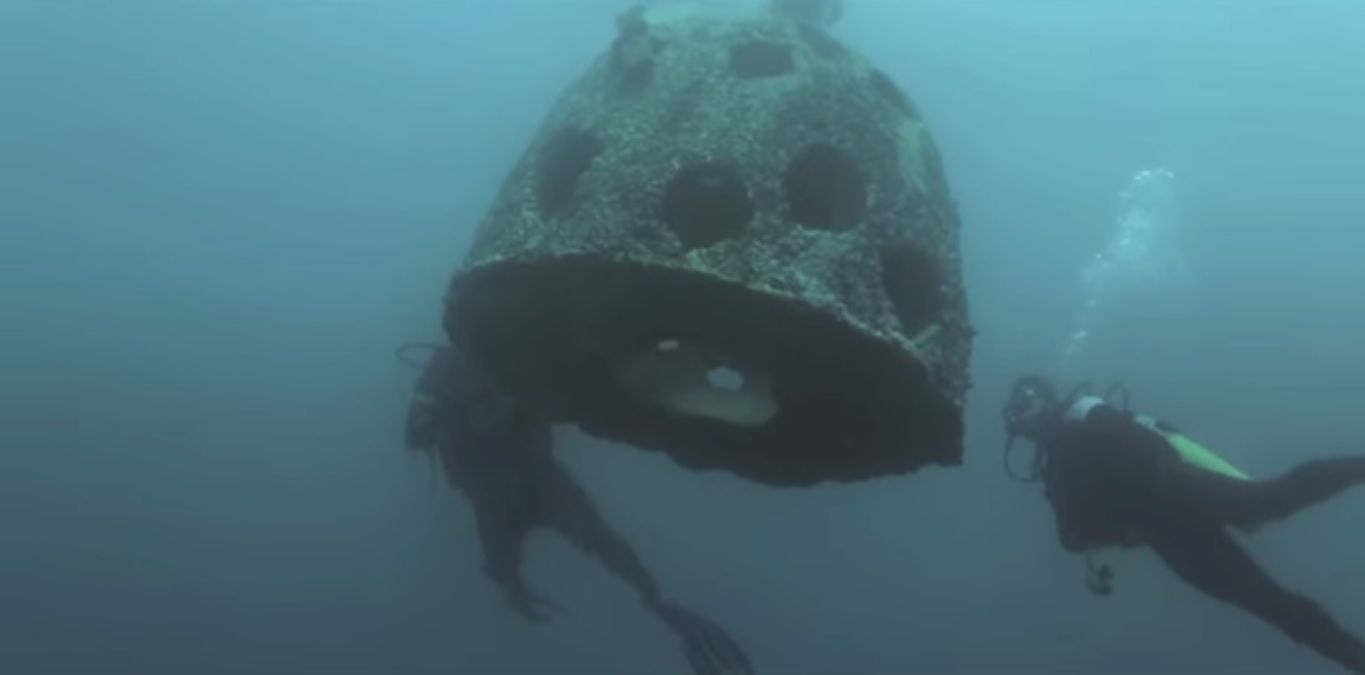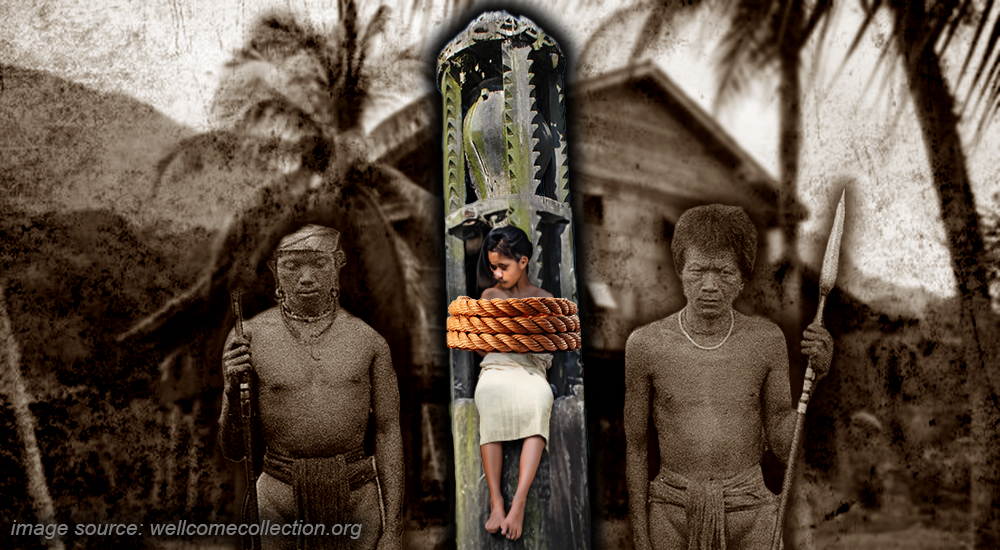In the 1950s, the British RAF parachuted cats down into Sarawak. Yes, really.
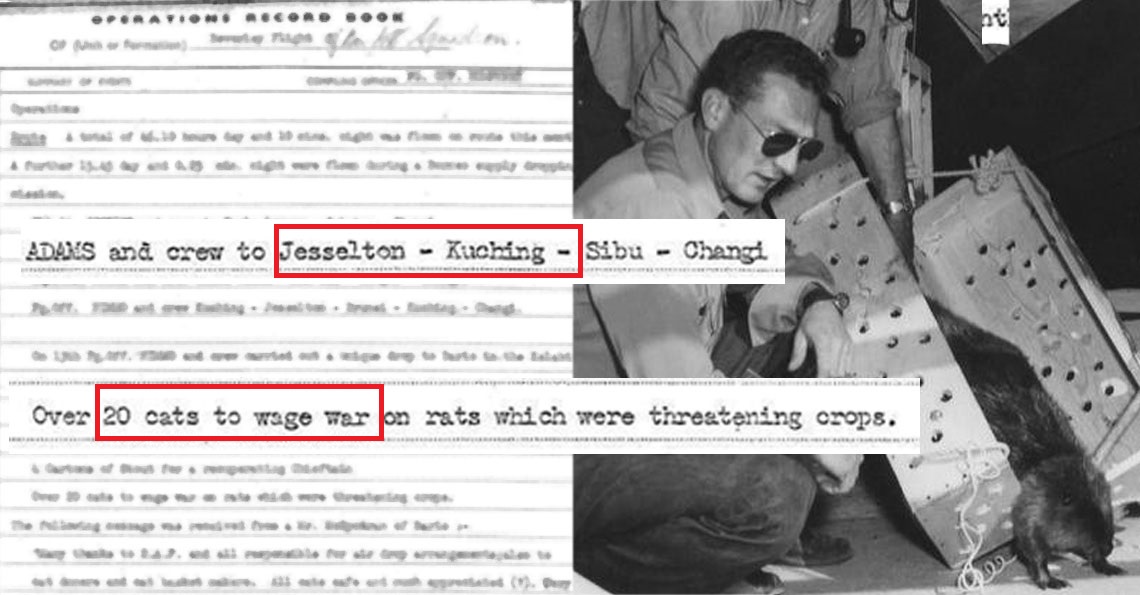
- 2.0KShares
- Facebook2.0K
- Twitter6
- LinkedIn6
- Email14
- WhatsApp25
If you enjoyed this story and want more like this, please subscribe to our HARI INI DALAM SEJARAH Facebook group ?
Malaysia has a colourful history – think dog-whoopin’ kancils in Malacca and Japanese soldiers invading on bicycles without tyres. If you get your history lesson from China tour guides in Langkawi, lagi epic.
But if you think these cray anecdotes smoked something funky, wait till you hear this one… on the morning of March 13, 1960, the British Royal Air Force had an official military operation, which involved dropping cats into Sarawak.
However, it wasn’t one of those instances where heads of state present diplomatic gifts in a show of diplomatic diplomacy, with diplomatic handshaking and diplomatic smiling. Nope, nothing like the time China gave us pandas.
The meows were actually parachuted into a remote village in Sarawak
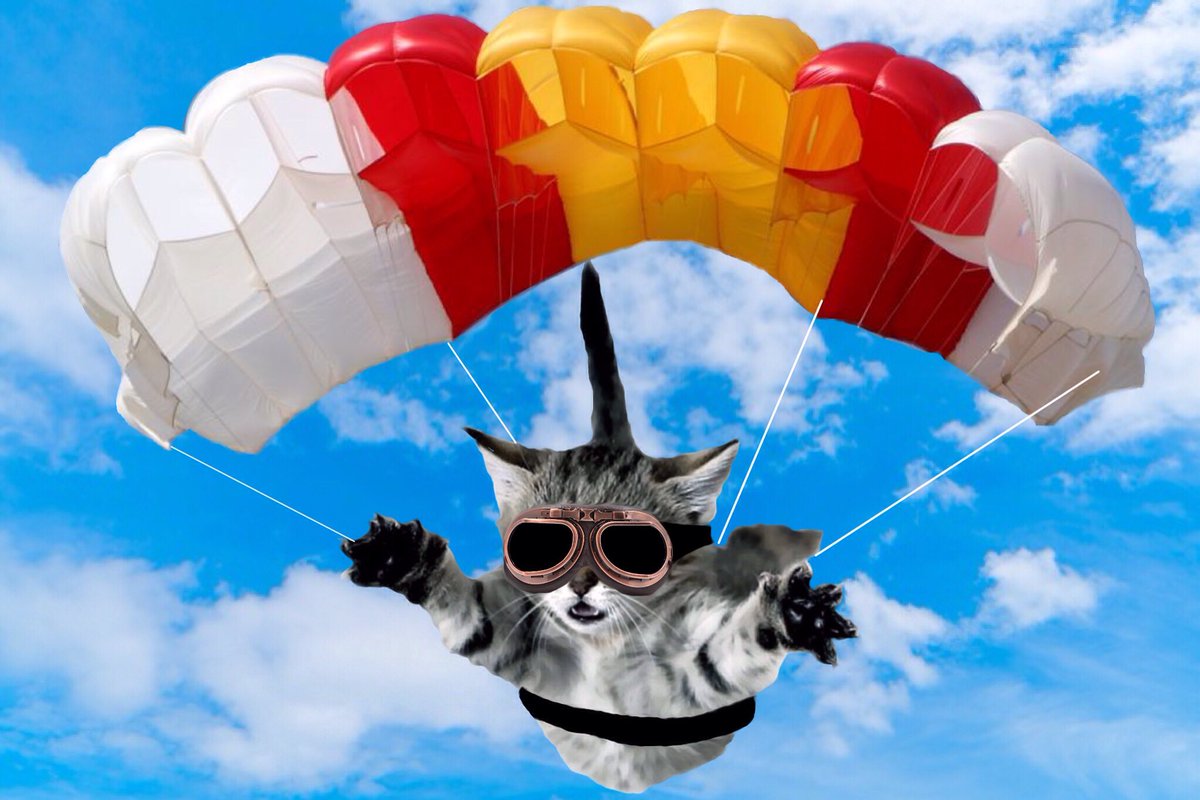
Now, this event is so bizarre it sounds more like fantasy than fact. Honestly, there is not much evidence to support it either, so probably a lot of it could be based on hearsay. We actually found a children’s storybook written about it called ‘The Day They Parachuted Cats on Borneo’ with the cutest illustrations. In any case, it’s too good not to spill, so here’s the hilarious story of Operation Cat Drop.
Funnily, it began NOT with cats, but with mosquitoes! Malaysia has battled with malaria (a mosquito-borne disease) for more than a 100 years.. coz tropical weather so mosquitoes live long and prosper. The oldest way of dealing with malaria, in the 1900s, was to drain swamps where mosquitoes bred. And so the British colonials did that with gusto, coz it was either that or die.
Later, when things were a bit more advanced, humans embarked on chemical warfare with the mozzie race. Between 1950s-60s, the World Health Organisation (WHO) kindly went around spraying insecticide all over the “malarious areas” of the world, including Sarawak. It was known as the Global Malaria Eradication Campaign. That much we know, because there are records of the campaign and that it reached Malaysia.
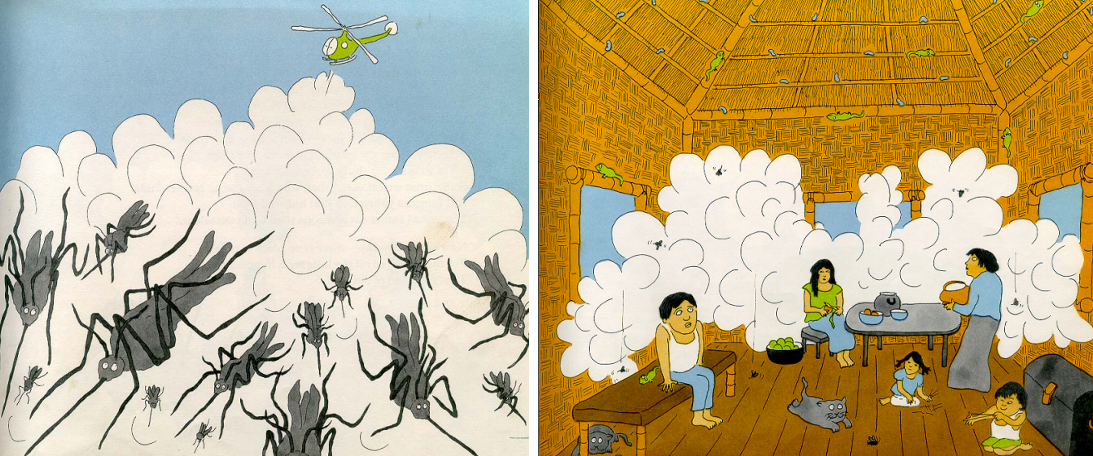
Unfortunately, baaaddd insecticide bro! They used Dichlorodiphenyltrichloroethane (DDT) which ultimately became infamous due to its environmental impact. We won’t go too much into detail, but just know that it’s very toxic and dangerous.
The DDT worked wonders on killing the blood-sucking buzzers…but it also annihilated flies! The contaminated flies were eaten by lizards, which were then eaten by house cats, which then dieded. Meeeow. 😥 We checked up on this and apparently it’s very common for cats and dogs to get poisoned when they eat lizards or frogs. Here’s how the children’s storybook described it:
“We’re the cats on the island of Borneo
Where the farmer – who loves us – bends low, bends low.
Eating all those lizards, or geckoes, by name,
Is turning out to be (sigh) a dying shame,
‘Cause those lizards are poisoned from tail to head,
And killing those lizards is killing us dead.
We poor cats got a massive overdose.
What’s left to say
(Sob)
Except adios.” – excerpt taken from ‘The Day They Parachuted Cats on Borneo’
Because all the cats died, the rats came! Eeee
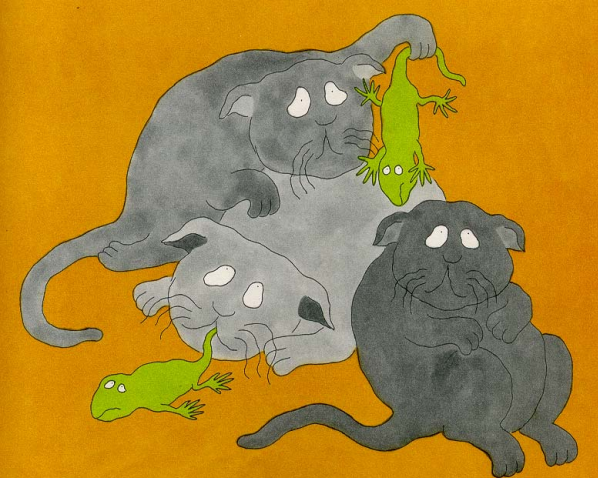
You know what happens when you remove a predator from the circle of life food chain… As a result of the cat population decreasing, the rat community began to thrive and ruined the villagers’ crops, plus they brought in a host of serious diseases and bench pressed like you ain’t the boss of them.
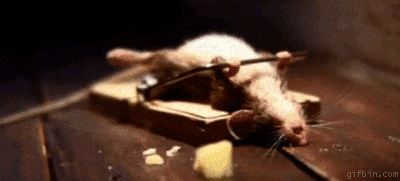
If that’s not bad enough, the palm thatched roofs of the village houses in Sarawak CAVED IN, coz caterpillars that fed on palm also thrived, since the flies (which ordinarily ate the caterpillars), KO-ed. Wahh, double whammy! D:
So, WHO’s sorry now? To solve the rat problem, WHO and the Royal Air Force loaded cats into perforated containers and dropped them into the villages by parachute. Another source said 14,000 of them were attached to parachutes with harnesses, though it was from a book of short stories classified as fiction:
“…cats in every color of the rainbow, cats with one ear, no ears, half a tail, three-legged cats,… and all of them twirling down out of the sky like great big oversized snowflakes…” – quoted from ‘Without A Hero’, a book of short stories
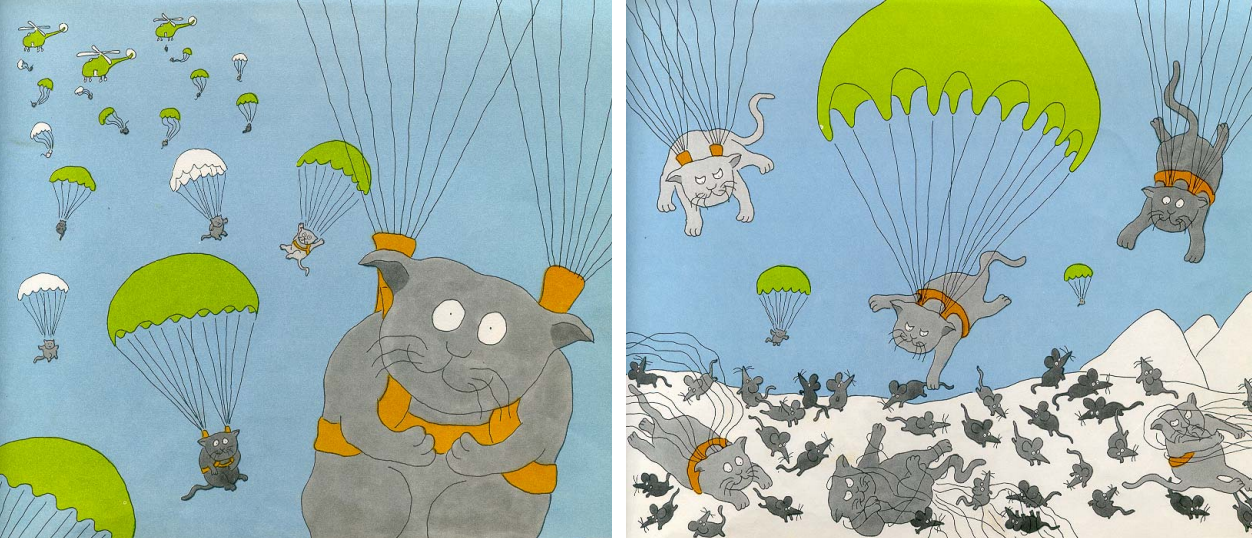
BULL! Can the cats possibly have survived the drop? They might’ve, not to mention, they probably executed perfect landings coz cats always land on their feet right? Perfect 10! Seriously tho, history has seen animals dropped from planes before.

In 1948, Idaho, America was overrun with beavers (yes, our featured image was actually beavers, not cats). The authorities decided they would be happier in the Chamberlain Basin, a wilderness of mountains, lakes and forest, so they packed 76 beavers into 8 specially constructed crates pimped with parachutes and jettisoned them from a plane. Only one casualty was reported, but the rest seemed no worse for the wear and afterwards set up a successful colony.
This method is still being used to relocate animals today. For example, Utah wildlife managers released a video showing how they restock remote lakes with fishes from their hatcheries by dropping them from a low-flying plane. The practice, which has been going on since 1956, is called aerial restocking. Though it looks like a harrowing drop, Ted Hallows (Kamas State Fish Hatchery supervisor) says that most of the fish reach the water safely. He explained that stocking lakes used to take months of walking in with milk cans full of fish.
Okie, coming back to Operation Cat Drop. The WHO Library receives many queries about Operation Cat Drop and library staff wonder if it really did rain cats in Borneo or whether it’s just a tall tale…… until they received this page from the RAF Changi Operations Record book for March 1960 with an entry about “over 20 cats to wage war on rats which were threatening crops”:

So, can we really believe the Royal Air Force dropped 20 or 14,000 cats of every colour and size over the Sarawak skies? You be the judge. One thing’s for sure, we should never mess with the balance of Mother Nature – now that’s a fact.
*The next bit contains Avengers SPOILERS.
Moral of the story is, dun be a Thanos

The incident in Sarawak attracted attention and controversy because a well-meaning action had resulted in the unbalancing of a delicate ecological equilibrium. In short, they tried to be Thanos, whose goal in Infinity War was to “balance the universe”. Well maybe they didn’t anticipate the consequences at those times and they were trying to help us eradicate malaria.
By now however, we know the balance of the ecosystem is a fragile thing. There are many examples of what happens when humans introduce or remove a certain species. Take the Macquarie Island ecosystem for instance, it is home to native seals, penguins, and sea birds, without a single rat in sight…until Europeans arrived in 1810. Then they brought in cats (but not by parachuting them in :p ) to control rats. But the cats started eating the sea birds too.
Then some fler went and brought rabbits, which of course bred like rabbits and ate all the grass, which caused erosion to damage the island. So, stoats were introduced to control rabbits and soon began helping themselves to sea birds and their eggs. Possums were then brought in, but cats didn’t think they were gourmet enough, so they were left to breed to the point of becoming pests. It goes on and on…
Meanwhile, in other parts of the world, humans are carrying out ‘carnivore cleansing’, where they kill animals like lions and wolves, because large carnivores kill livestock and threaten rural communities. Scientists are warning about the damage it can cause the ecosystem. To be fair, it can work out for good, like what happened when they introduced wolves to Yellowstone Park, Wyoming. The presence of wolves enabled dying beaver populations to flourish again.
You never know how the odds play out, but this ain’t a movie. What goes extinct stays extinct…… or do they??
If you enjoyed this story and want more like this, please subscribe to our HARI INI DALAM SEJARAH Facebook group ?
- 2.0KShares
- Facebook2.0K
- Twitter6
- LinkedIn6
- Email14
- WhatsApp25

